TinyFPGA AX2 Board
The TinyFPGA AX2 board is a bare-bones breakout board for the XO2-1200 field-programmable gate array (FPGA). Though small, the AX2 is an incredibly powerful board with 18 user IOs (21 with JTAGEN), 64 kilobits of dedicated RAM, 64 kilobits of user flash memory, and a PLL in addition to the features of the A1. The power of the TinyFPGA AX2 allows you to do things that are not possible with traditional microcontrollers. While microcontroller boards have a fixed set of peripheral devices on-board, TinyFPGA boards can implement the exact peripheral devices needed to get the job done!
The full potential of programmable logic devices allows for even more ambitious projects than custom microcontroller peripherals: augment a retro-computer with new capabilities, recreate your favorite old-school computer, or design your own. The TinyFPGA AX2 has been designed from the ground up to be as cost effective as possible. As such, it does not include a built-in USB interface as that would increase the cost and complexity too much. Instead it relies on JTAG programmers. To program the TinyFPGA AX2, you can use the inexpensive TinyFPGA Programmer. The official Lattice JTAG programming cable and other FTDI2232-based programmers will work as well if you already have one.
Whether you are a hobbyist looking to expand your capabilities, a professional prototyping a new product, or a student learning the ropes of digital design, the TinyFPGA AX2 can help you on your way.
- Dimensions: 1.2in x 0.7in
- XO2-1200 FPGA
- Low power 3.3 volt operation
- 18 user IOs (21 with JTAGEN)
- 1200 4-input look-up tables
- 10 kilobits distributed RAM
- 64 kilobits dedicated RAM
- 64 kilobits user flash memory
- 1 SPI Hard-IP
- 2 I2C Hard-IPs
- 1 PLL Hard-IP
- Built-in flash configuration memory programmable via JTAG
TinyFPGA AX2 Board Product Help and Resources
Core Skill: Soldering
This skill defines how difficult the soldering is on a particular product. It might be a couple simple solder joints, or require special reflow tools.
Skill Level: Noob - Some basic soldering is required, but it is limited to a just a few pins, basic through-hole soldering, and couple (if any) polarized components. A basic soldering iron is all you should need.
See all skill levels
Core Skill: Programming
If a board needs code or communicates somehow, you're going to need to know how to program or interface with it. The programming skill is all about communication and code.
Skill Level: Expert - You should be extremely comfortable programming on various hardware in several languages.
See all skill levels
Core Skill: Electrical Prototyping
If it requires power, you need to know how much, what all the pins do, and how to hook it up. You may need to reference datasheets, schematics, and know the ins and outs of electronics.
Skill Level: Rookie - You may be required to know a bit more about the component, such as orientation, or how to hook it up, in addition to power requirements. You will need to understand polarized components.
See all skill levels
Comments
Looking for answers to technical questions?
We welcome your comments and suggestions below. However, if you are looking for solutions to technical questions please see our Technical Assistance page.
Customer Reviews
4 out of 5
Based on 3 ratings:
1 of 1 found this helpful:
Great little FPGA but if you can afford it buy the B series
If you just want to have a quick cheap fpga to replace a few chips in your vintage computer breadboard build or to see what this whole programable logic stuff is go for it, if you want infinitely more functionality get the B series model. It is more expensive but the open source resources available make it well worth it.
1 of 1 found this helpful:
Works nice, but i need more resources, i need BX Board
Hard to get, the bx boards...so i tried the ax. Unfortunately it is too small for my task.
But apart from that it works fine if you can get hold of a programmer which is not on board like with the bx.
Excellent!
Incrediable value

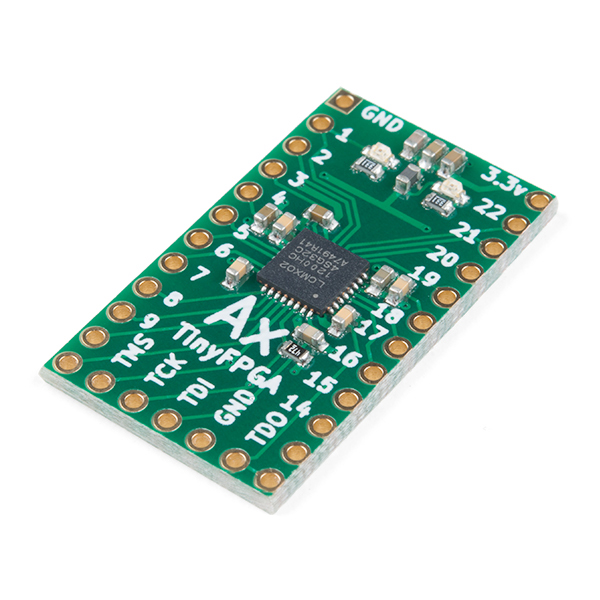
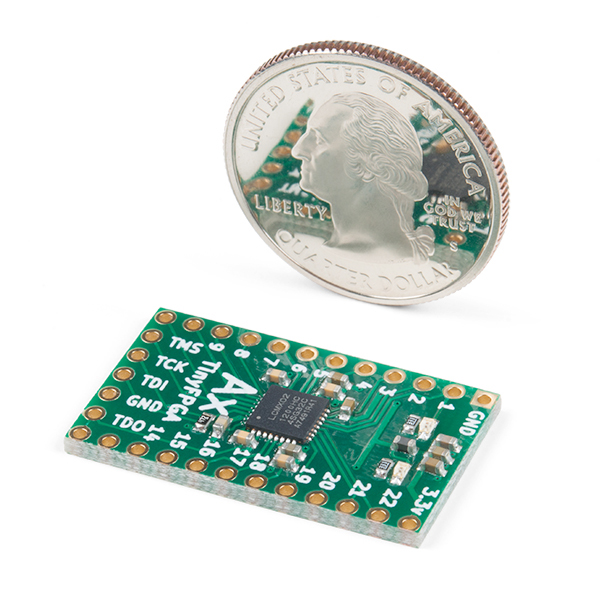
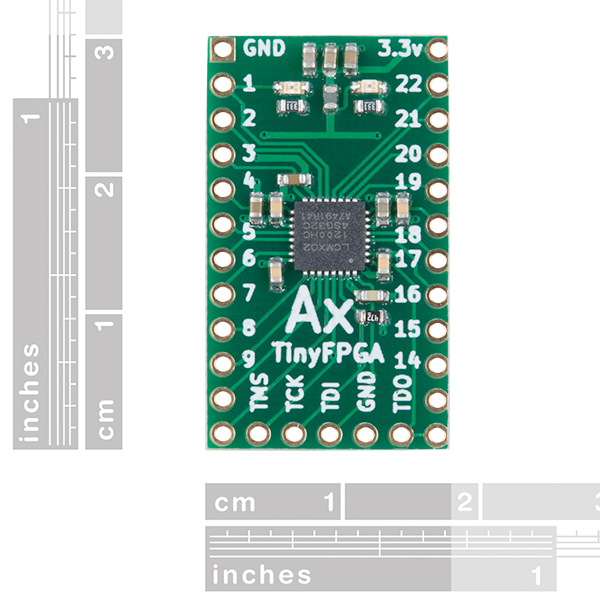
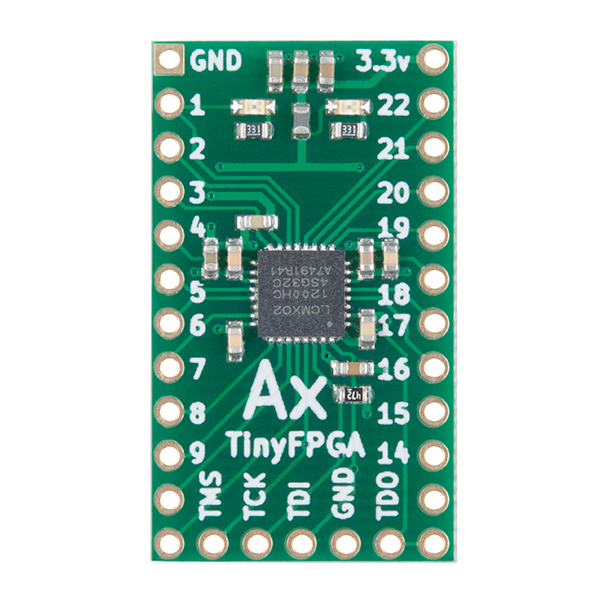
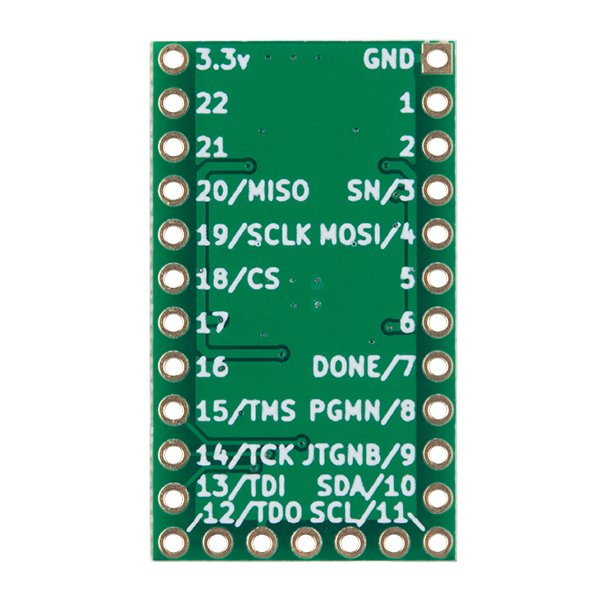


Note: This FPGA's built in Flash can be used to store the configuration bitstream, and hence to boot-config the FPGA. This allows using the board stand-alone. That is not obvious in the description, and if a reader is familiar with other FPGAs, they might assume the lack of external serial flash means no stand-alone operation. And it would be encouraging to add the step of programming the flash for stand-alone operation in the tutorial. This is assuming I read the datasheet correctly.
Correct, the flash is on the MachXO2 chip itself. The TinyFPGA Programmer programs the FPGA configuration flash by default. I can update the guide so this is more clear (https://tinyfpga.com/a-series-guide.html). The FPGA configuratino flash is fast enough and durable enough that programming the FPGA config RAM is not worthwhile.
Ah, good to know! Thanks
Looks interesting. Can you share the IO compatibility? Is it 5V tolerant? What kind of socket does it need? Do you have a datasheet? (there's no DS under "DOCUMENTS"). I know it's Friday, but another minute authoring the product summary page could save a lot of time. Thanks! -Mark
Hi Mark, you are right! I should have sent SparkFun the MachXO datasheet: MachXO2FamilyDataSheet.pdf.
The MachXO2 FPGA used in the TinyFPGA AX2 is not 5V tolerant, you'll want to use a level shifter or voltage divider to drive 5v signals into the board.
The board IOs are set on a 0.1" grid compatible with breadboards and prototyping boards. Socket compatibility depends on the pins you use. That said, the pins are 0.6" apart from the left to right side of the board and there are 12 pins on each side of the board.